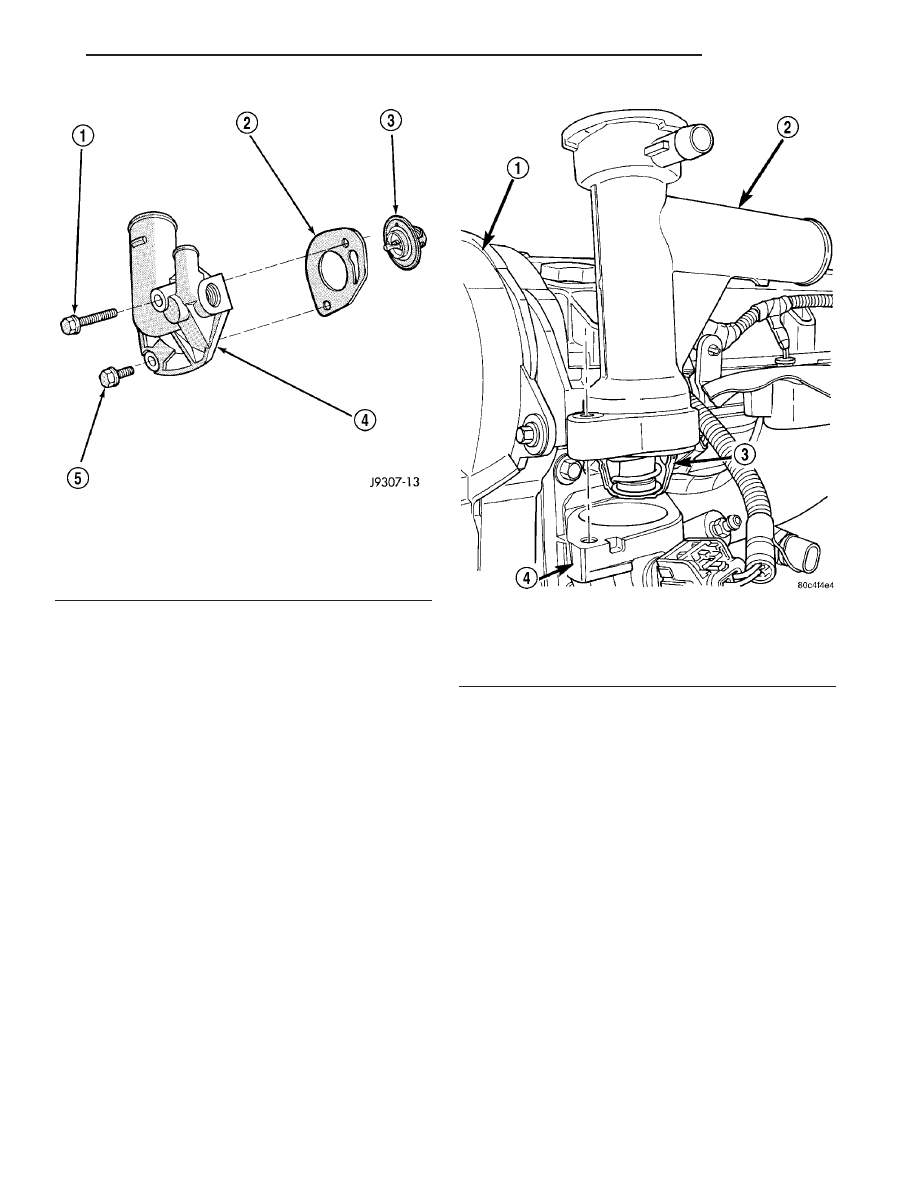Jeep Wrangler TJ. Manual - part 267

REMOVAL
(1) Drain cooling system below thermostat housing
level.
(2) Disconnect engine coolant temperature sensor.
(3) Disconnect heater supply hose.
(4) Remove housing attaching bolts (Fig. 10).
(5) Remove housing, gasket and thermostat (Fig.
10).
INSTALLATION
INSTALLATION
(1) Install the replacement thermostat so that the
pellet, which is encircled by a coil spring, faces the
engine. All thermostats are marked on the outer
flange to indicate the proper installed position.
(2) Observe the recess groove in the engine cylin-
der head (Fig. 11).
(3) Position thermostat into this groove with arrow
and air bleed hole on outer flange pointing up.
(4)
Install replacement gasket and thermostat
housing.
CAUTION:
Tightening
the
thermostat
housing
unevenly or with the thermostat out of its recess
may result in a cracked housing.
(5) Tighten the housing bolts to 20 N·m (15 ft. lbs.)
torque.
(6) Install hoses to thermostat housing.
(7) Install electrical connector to coolant tempera-
ture sensor.
(8) Be sure that the radiator draincock is tightly
closed. Fill the cooling system (Refer to 7 - COOLING
- STANDARD PROCEDURE).
(9) Start and warm the engine. Check for leaks.
INSTALLATION
(1) Clean all gasket sealing surfaces.
(2) Place a new gasket (dipped in clean water) on
the coolant outlet connector surface. Position thermo-
stat with air bleed at 12 o’clock position in thermo-
stat housing (Fig. 12).
(3) Position the coolant outlet connector and gas-
ket over the thermostat, making sure thermostat is
seated in the thermostat housing.
(4) Position outlet connector to thermostat housing
and install bolts. Tighten bolts to 28 N·m (20 ft. lbs.).
(5) Install radiator hose to coolant outlet housing.
(6) Connect engine coolant temperature sensor.
Fig. 9 Thermostat Removal/Installation
1 - LONG BOLT
2 - GASKET
3 - THERMOSTAT
4 - THERMOSTAT HOUSING
5 - SHORT BOLT
Fig. 10 Thermostat and Coolant Outlet Connector
1 - TIMING BELT COVER
2 - OUTLET CONNECTOR
3 - THERMOSTAT
4 - HOUSING
TJ
ENGINE
7 - 29
ENGINE COOLANT THERMOSTAT (Continued)